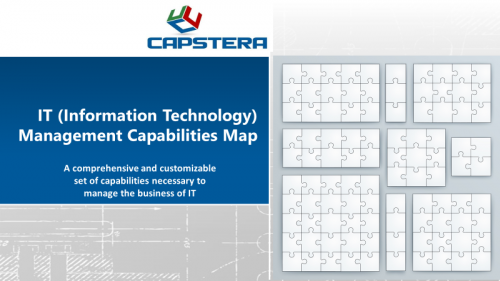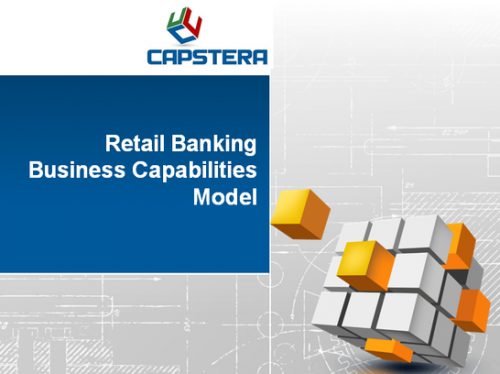Media and Entertainment Business Capabilities Map
Price range: U.S. $999 through U.S. $2,999
The Media and Entertainment Business Capabilities Map is a customizable, comprehensive, and in-depth set of business capabilities that capture the essence of what media and entertainment company does. It will help companies gain a holistic perspective of their business at a foundational level and provide a business blueprint for many valuable purposes.
The Media and Entertainment business capabilities map comprises about 540 capabilities across three levels.
Media and Entertainment Business Capabilities Map Deliverables:
The Media and Entertainment business capabilities model comprises ~540 capabilities across three levels and includes the following editable artifacts:
- An Excel spreadsheet with the grouping of capabilities.
- A PowerPoint format with the top two levels presented in a nested visualization.
- A Word document with capabilities in a multilevel list format.
- Capability Definitions (at Level 3)
- Capability KPIs (Key Performance Indicators) (at Level 2)
- Plus, Bonus deliverables.
(Note: As the media and entertainment industry business capabilities map is a digital deliverable, we do not accept returns or issue refunds. So, please read the product description and the terms carefully before purchasing.)
Watch a Media and Entertainment Capabilities Intro Video
The media and entertainment business capabilities map is a set of multilevel and granular business capabilities primarily focusing on the core industry-specific value chain but also decomposes the horizontal shared services.
A capabilities model is a must-have tool for business architects, enterprise architects, business and technology leaders, and project teams to fathom the nuances of the industry’s core, context, and commodity capabilities.
The Strategic Imperative for Media and Entertainment Industry Transformation:
The Media and Entertainment Industry is undergoing a significant transformation, driven by rapid technological advancements, evolving consumer preferences, and the emergence of new market players. As the landscape shifts, traditional players must adapt and innovate to survive and thrive in this dynamic environment.
The rise of digital technology has revolutionized content creation and distribution. High-quality production tools have become more accessible, empowering independent creators to produce diverse content. Meanwhile, social media platforms and streaming services have dismantled traditional gatekeepers, enabling content to reach global audiences instantaneously. This has democratized the industry, fueling increased competition and challenging traditional media powerhouses to stay relevant.
Audience preferences are also evolving, with consumers increasingly seeking on-demand, personalized, and interactive content. This has led to a surge in new formats such as virtual reality, augmented reality, and live streaming. Viewers now desire experiences that offer immersive storytelling, engaging gameplay, and social connectivity. Traditional players must recognize these trends and invest in cutting-edge technologies and formats to stay ahead.
Finally, new market entrants have emerged as formidable competitors, challenging existing industry giants. Tech companies such as Amazon, Netflix, and Apple have ventured into the Media and Entertainment space, leveraging their vast resources, global reach, and data-driven insights. As they disrupt the market, traditional players must reinvent their business models, forming strategic partnerships and embracing innovation.
The Media and Entertainment Industry is in the midst of a transformative period, driven by technology, changing audience preferences, and competitive pressures. To survive and thrive, existing players must be agile, embrace new formats, and rethink their approach to content creation, distribution, and monetization.
Business Capabilities are a Cornerstone for Transformation
For a media and entertainment company to transform successfully, it is essential to establish a structurally strong foundation to support change and innovation over time. This is where business architecture and business capabilities come into play. Business architecture is creating a structured model, including an abstraction of its operations, functions, systems, and resources. This model can help enterprises understand how their business operates, identify inefficiencies, and develop a plan to optimize and streamline operations. In addition, by creating a clear picture of their business architecture, companies can better understand how different business units and functions interact and how changes in one business area can impact other areas.
Business capabilities encapsulate and abstract the functions, skills, and resources a company needs to execute its business strategy successfully. By defining and organizing their business capabilities, companies can identify gaps and redundancies and develop a roadmap to address them. This helps ensure the firm has the necessary resources to execute its strategy and drive innovation over time.
Business architecture and capabilities provide firms with a framework to assess and optimize their operations, reduce costs, and drive innovation. By taking a structured approach to transformation, enterprises can build a foundation capable of supporting ongoing change and adaptation and position themselves for success in a rapidly evolving industry.
(NOTE: The current product provides a comprehensive business capability model. It does not include other business architecture artifacts.)
How to Use the Media and Entertainment Business Capabilities Map?
A business capabilities map is a fundamental and foundational deliverable in the business architecture continuum. For example, the Media and Entertainment capabilities model encapsulates end-to-end aspects of the business with a detailed, multilevel capabilities list.
There are several benefits from business capabilities, including, among others:
- Foster alignment between business and IT using capabilities as an everyday language.
- Capabilities are a structurally sound and internally coherent abstraction of business functions.
- A capability-based roadmap eliminates redundancy and replication and focuses on capability evolution
- Juxtaposing capabilities and systems/applications provide a footprint analysis and can lead to better application portfolio rationalization decisions.
The Media and Entertainment capabilities map decomposes components up to three levels. Created by business architects and industry domain experts, the capabilities list is detailed, in-depth, and conforms to the construct of MECE (mutually exclusive and collectively exhaustive).
Who should use the Media and Entertainment Business Capabilities Map?
The Media and Entertainment business capabilities matrix is a generic model; hence, it is a starting point, not the final product. (Please note that a generic map covering multiple areas will not be specific to your specific company or business model; that is where our professional services team can help customize and detail the capability model. Or you can modify and tailor it to your needs internally.) The primary users encompass:
- Business architects and enterprise architects.
- Leaders focused on business transformation.
- Product and program managers enabling capabilities.
The Media and Entertainment Industry comprises various subsectors, each with its own unique characteristics and offerings. With modifications, business architects can customize our capability map to the following subsectors:
- Film and Television: This subsector involves the production, distribution, and exhibition of movies and TV shows, including streaming content provided by platforms like Netflix, Amazon Prime, and Hulu.
- Music: This encompasses the creation, production, distribution, and performance of music, as well as related services like music publishing, licensing, and streaming platforms such as Spotify and Apple Music.
- Publishing: This subsector includes the production and dissemination of printed materials, such as books, newspapers, and magazines, as well as digital publishing platforms and e-books.
- Video Games: This involves the development, distribution, and marketing of video games and related products, including console games, mobile games, and online gaming platforms.
- Radio and Podcasts: This subsector covers the creation, production, and distribution of radio programming and podcasts, including talk radio, music radio, and on-demand audio content.
- Advertising: This includes the creation and placement of advertisements across various media platforms, such as television, print, digital, and outdoor media.
- Live Events and Performances: This encompasses live entertainment offerings, such as concerts, theater performances, sports events, and festivals.
- Animation and Visual Effects (VFX): This subsector includes the production of animated content for film, television, and video games, as well as the creation of visual effects for various media formats.
Why Purchase a Business Capabilities Map?
Defining business capabilities from a blank slate takes time and effort and delays time to value. Instead, a pre-built and customizable business capability map helps provide 60-80% of capabilities allowing internal teams to focus on what is missing or unique to their companies.
And the cost is less than an inexpensive team dinner or the loaded cost of 4-5 team members brainstorming for an hour.
And far less than the deliverables consulting firms produce at over $100,000 or more, and compared to that number, the cost of our capabilities models is a fraction (a rounding error.)
Even if you already have a capability map, you could use our version to compare, validate, and potentially include missing capabilities.
A Note About the Artifacts:
- Business Capabilities Matrix: A functional area occupies one box in many business capability maps. Some may wonder why we decomposed the capabilities into 100X or more capabilities. We humbly submit that one box or entry in a one-page diagram is Wall Art, not an implementation tool. Decomposing capabilities into a nested list of granular items will help understand a capability’s depth, breadth, scope, and importance. It is also possible that some capabilities in our matrix may not be relevant to you. Similarly, we may have captured and documented some relevant and essential capabilities of your firm.
- Capability Definitions: We include capability definitions at Level 3. Please feel free to modify it to your company’s needs.
- Capability KPIs (Key Performance Indicators): We added a few KPIs for capabilities (mostly at Level 2) to get you started. You may not measure these KPIs in your company and have an entirely different set of metrics. Again, use them as a springboard, and not debate the applicability to your firm.
Provisos:
- We cannot accept refunds or returns as the products are digital deliverables.
- Please realize that a generic capability model may or may not be entirely applicable in some circumstances.
- We do not offer any implied or explicit warranties, and it is sold on an as-is basis.
- The sale does not include customization or implementation help.
- Please review our standard Ecommerce Store Terms and Conditions.
Need Customization Help?
Media and Entertainment Business Capabilities Map
Price range: U.S. $999 through U.S. $2,999





